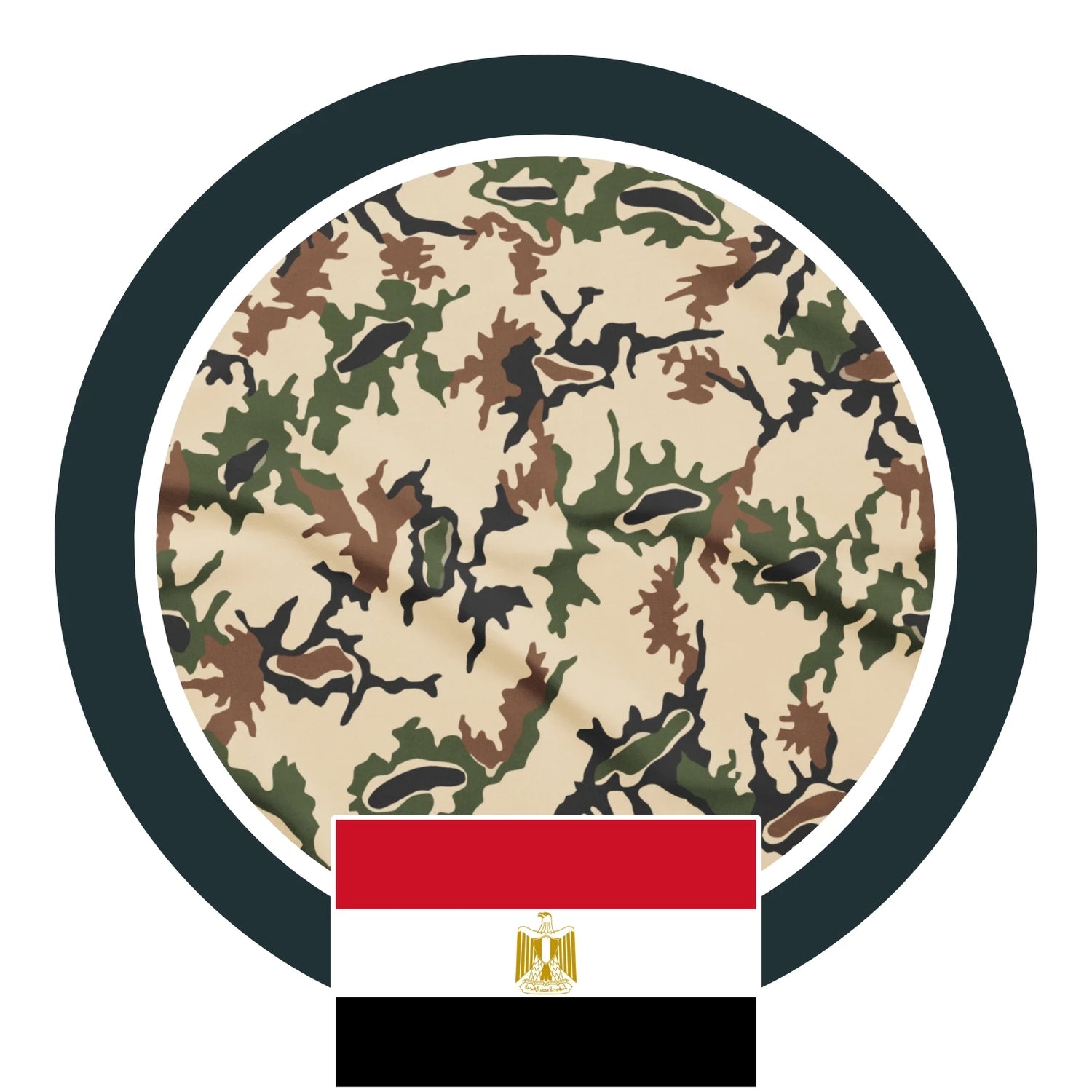Collection: Egyptian CAMO Patterns
One of the earliest camouflage patterns produced in Egypt is frequently called the "rocks" pattern (often to discern it from the "sand" pattern), which is believed to have emerged in 1956. The design can be seen to derive from the German WW2 "Planetree" pattern (hence is sometimes called "Egyptian Plane Tree"), although certainly the Egyptian version is much more crude. Variability within production runs is considerable, even more so when factoring in that the pattern remained in production well into the 1990s period. The "rocks" pattern is nearly always printed on one side of a reversible fabric, with a two-color desert "sand" pattern (see below) on the other side. This practice continued into the later years of its production, but contemporary uniforms were no longer designed to be worn reversibly; they were either sewn together with the "rocks" or the "desert" side out. This pattern is generally associated only with Airborne and Commando units. Egyptian manufacturers have exported this pattern to Sudan, Somalia, Niger, Libya, and Yemen, among others. Seen below are several variations of the pattern, giving a cross-section of tremendous variability between early and late production.
-

Egyptian Scrambled Eggs Desert CAMO
The Egyptian desert (scrambled eggs) pattern was modified in the later part...


